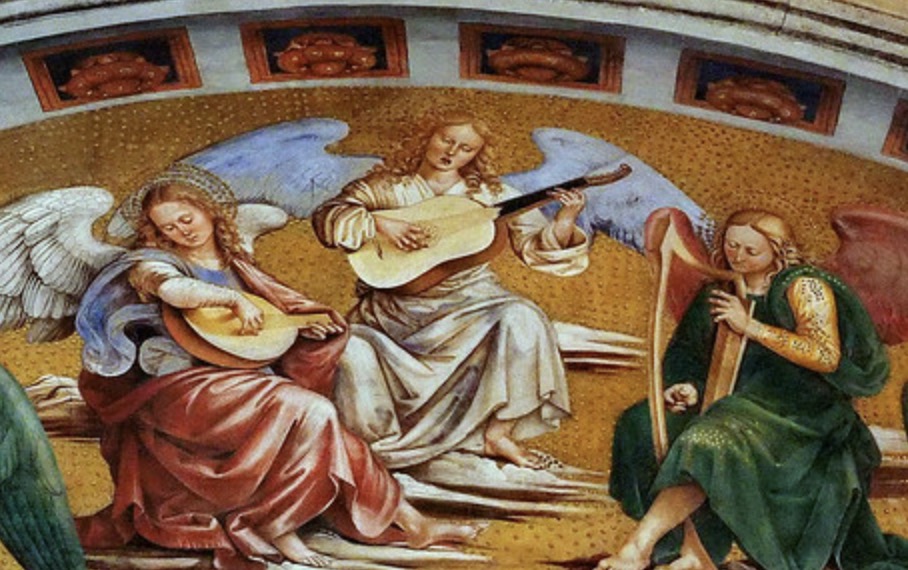Angel playing a viola da mano, Luca Signorelli
(1499-1504) - Orvieto, Cathedral (Cappella Nuova), Orvieto, Italy
instrument: viola da mano (vihuela) | century: 16cent/1/early | catalogue nº: 16-110

Artwork
Creator Signorelli, Luca
Medium Artwork: Fresco
Location
City Orvieto | Region Italy | Old kingdom Papal States (?)
Characteristics
| Body Waisted | Strings | Neck Long | Pegbox Sickle |
| Bridge Fixed | Frets | Back Flat | Pegs Lateral |
| Technique Plucked fingers thumb in |
Commentary
ARTWORK
Angel playing a viola da mano in the “Coronation of the Elect in the Earthly Paradise” south wall • Luca Signorelli, fresco executed between 1499 and 1505. Minamino explains that the scene closely resemble’s Dante’s description (minamino2004-2, 181-182). The location of the vihuela playing angel at the top of the pyramid. The instruments represent celestial harmony and the vihuela at the top may also be symbolic, on the one hand a tribute to the Borgias and a slap in the face to Savonarola who advocated doing away with such instruments that were inevitably connected with sensual pleasure.
INSTRUMENT
The painting shows what appears to be quite a large Italian style viola da mano played by an angel. It has gently incurved waists, with the bridge located about 1/6 of distance from the lower end. This is a little further from the lower end than many instruments of the time, perhaps because the instrument appears to have quite a deep body. The carved rose is almost in centre of body. It has a narrow neck ending in a sickle shaped pegbox. The angel plays a regonisable chord (E major in G tuning) and plucks with a thumb-under position, but a clear hand position. It gives the impression that it is copied from a real player. Gétreau (gétreau2004, 44) points out that the angel is accompanying her own singing.
Renato Meucci (meucci1996) indicates that the vihuela (viola da mano) shows itself as a symbol of the Borgia family: in the famous fresco in the cathedral of Orvieto from the early 16th century it is in the hands of an angel who crowns a group of other angel musicians holding in her hand this instrument. Orvieto was a fortress of the Borgia at the end of the 15th century, and that the presence of the viola da mano is shown in various other places and circumstances tied to the papal family. This view is reasserted by Minamino (minamino2004-2, 181)
Reproductions
http://www.studyblue.com/notes/note/n/midterm-flashcards/deck/10279888